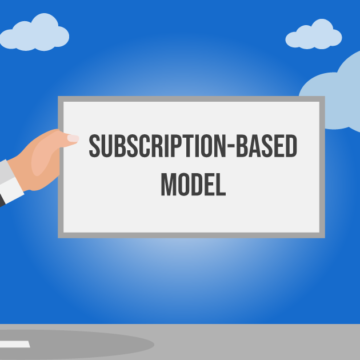Many businesses collect monthly up-front fees from their customers – for work that has yet to be performed. This subscription strategy is valuable both for your company and for your customer.

It enables your customers to access the skills and experience of your certain worker or services on demand. This means that your company creates a steady cash flow allowing it to invest confidently in things that grow the business.
For companies, there are lots of different recurring billing strategies to choose from and various ways to bill their subscribers. Especially as software service providers (SaaS), flexible billing models are needed. But which billing model should my company use?
Here are the most common recurring billing strategies used in PlanMill:
1. Time and material based recurring billing
This is the simplest and most common recurring billing model. A product or service is provided for a single agreed price (per person, skill, task type, etc if needed) and charged on a recurring basis. It provides some key advantages to both businesses and their subscribers. It means that the company’s revenue is predictable and the subscriber’s financial obligation is easily anticipated.
The main principle is quite easy, supplier company simply enters recurring prices and billing cycle duration (monthly or custom) and they’re good to go.
Examples:
- A professional service company charges (based on reported hours) customer’s monthly or hourly rates for services used (such as consulting, programming, and testing).
- A Certified Public Accountant (CPA) firm charges a customer’s monthly hourly rates for services used.
2. Fixed-price recurring billing
Another popular pricing strategy for business is fixed-price recurring billing. Here the company sells each product or service for a set price at the beginning of the billing cycle.
There are a lot of plus sides to this billing model. For companies, it is the easiest way to calculate the revenue expected each month. And for customers, it means low-cost entry, since they pay lower prices on a monthly or weekly basis rather than having to pay the full purchase price outright for access. The supplier company just enters recurring price and billing cycle duration (weekly, monthly, quarterly, or annually) and they’re ready to go.
Examples:
- A SaaS company charges 100 €/month or 1,000 €/year.
- A marketing agency charges 2,000 € every 3 months.
- An eCommerce site ships a mystery box for 25 €/month.
3. Quantity-based billing (volume, tiered)
This billing model charges a certain fixed amount and extra for add-ons. The company offers different price packages where volume is the key differentiator. With quantity based billing once customers fill up a tier, they move to the next tier and start charging a different price.
Usually, there are at least two different tiers which offer customer something different. Three tiers are the most popular because it creates a frame of reference for pricing. When bracketed by two other choices, the purchase conversion goes up.
The advantage of this model is that is very transparent, as it is based directly on the number of add-ons purchased. This allows for predictable costs that scale with the business.
Examples:
- A SaaS company charges a fixed monthly amount such as 200 €/month for 5 users plus 25 €/month for additional users.
- A web hosting company charges 99 €/month for each server.
- An HR firm charges 500 €/year for each company employee.
- A SaaS company charges 100 € for the first 10 hours per month of consulting work and 85 € per hour for exceeding hours.
- A SaaS company charges a fixed 1,000 € for the first 10 hours per month of support work and 90 € per hour for exceeding hours.
4. Metered billing
In this model, your customers are billed based on usage and service availability at the end of their billing period. It is perfect for variable charges or billing overages. This model is common with businesses that are transaction-based, like cell phone carriers, where clients pay according to their usage (data, minutes, or text).
The benefits of both sides are obvious. Customers are only paying for what they’ve used and they can control how much they pay by curtailing their usage in a given period. For businesses, this model is highly responsive to market conditions. It lets companies track usage and identify upsell opportunities that offer better per-unit cost savings to subscribers based on their volume.
Examples:
- An online data storage company bills 20 €/month for 100 GB and 5 € for each additional GB used.
- A website hosting provider charges 50 €/month for 10,000 page views and 0.01 € for each additional pageview.
- An eCommerce platform charges customers 1% of their revenue each month.
- A telecom company charges 0.05 €/minute for phone usage each month.
- A marketing company charges a 10% fee based on monthly ad spend.
5. Bundled (package) pricing
Basically in this model, the company provides a variety of products or services and allows your customers to select the desired “bundle” based on their needs. Perfect for a la carte pricing, because it gives the customer freedom in purchasing decisions and they can tailor the price so it matches their ability to pay.
Example:
- A SaaS company charges 100 €/month, plus 10 €/month per user, and offers a high priority support option for an additional 50 €/month.
6. Multiple subscriptions per customer
This recurring billing strategy integrates multiple subscriptions to a single customer. It allows for unique billing scenarios where customers need to be billed for multiple subscriptions at various intervals.
Examples:
- A SaaS company charges 500 €/year and has an optional 25 €/month high priority support subscription.
- A web hosting company charges 100 €/year for hosting and 5 €/month for a static IP address.
- A Certified Public Accountant (CPA) firm changes customer’s 500 €/year and monthly hourly rates for services used.
7. Customer-specific pricing
Finally, in this model company offers customized recurring charges for each customer. Thus, each pricing scenario will be defined internally or externally. Prices are typically saved as a contract that has a certain validity period.
Examples:
- A SaaS company sells many recurring products, and each customer has their own custom recurring price for each service.
- A large sales organization wants to close deals faster, so they allow their sales agents to customize every price in negotiations.
Choosing the right billing model
The flexibility of the SaaS business means there is extreme flexibility in the pricing model, and the most common are mentioned above. Therefore, some models are better suited to one type of model vs. another, and there may need for companies to alter their model over time as their business grows and evolves.
Read more:
What is Professional Services Automation (PSA)?
Automate billing for services, hours, and expenses
PlanMill Ltd. is a leading provider of user-friendly web-based CRM, PROJECT, and ERP Cloud solutions designed for the service business. We enable your organizations to streamline business processes, improve control of your customers, personnel, projects, time, expense, and finance – while enhancing productivity and profitability.
Illustration: Billing Vectors by Vecteezy



